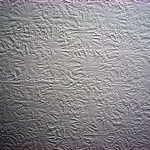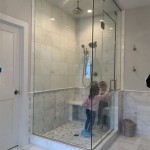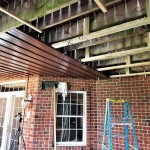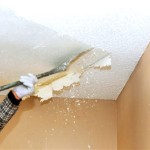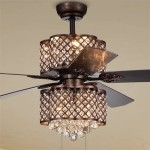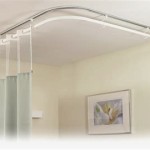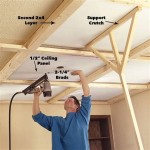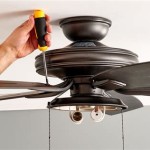What Is The Best Ceiling Fan For A Living Room?
Selecting the best ceiling fan for a living room requires careful consideration of several factors. A ceiling fan is not merely an aesthetic addition; it’s a functional appliance that can significantly impact the comfort and energy efficiency of a living space. The optimal choice depends on the room's size, aesthetic preferences, desired features, and budget. This article will explore key considerations for selecting a ceiling fan for a living room, examining various aspects such as size, motor type, blade material, lighting, and energy efficiency.
Room Size and Fan Size
The size of the living room is a primary determinant of the appropriate ceiling fan size. Using a fan that is too small will fail to effectively circulate air, while a fan that is too large can be overpowering and aesthetically unappealing. Fan sizes are typically measured by the blade span, which is the diameter of the circle the blades create when in motion. A general guideline is as follows:
For rooms up to 75 square feet, a fan with a blade span of 36 inches or less is generally suitable. These smaller fans are ideal for compact living rooms or smaller seating areas within a larger space.
For rooms between 75 and 150 square feet, a fan with a blade span of 42 to 48 inches is typically recommended. This size range provides adequate air circulation for medium-sized living rooms.
For rooms between 150 and 300 square feet, a fan with a blade span of 50 to 54 inches is often the best choice. This size ensures effective air movement throughout a larger living room.
For rooms larger than 300 square feet, a fan with a blade span of 60 inches or greater may be necessary. In very large spaces, multiple fans might be considered to ensure comprehensive air circulation.
In addition to the room's square footage, the height of the ceiling should also be taken into account. For ceilings lower than 8 feet, a hugger or flush-mount fan is recommended to maintain adequate headroom. For ceilings between 8 and 9 feet, a standard downrod fan is appropriate. For ceilings higher than 9 feet, a longer downrod should be used to position the fan blades at the optimal height for air circulation, typically between 8 and 9 feet from the floor.
Motor Type and Performance
The motor is the heart of a ceiling fan, and its performance directly impacts the fan's efficiency, noise level, and lifespan. There are two primary types of motors commonly used in ceiling fans: AC (Alternating Current) and DC (Direct Current). Each type has its own advantages and disadvantages.
AC motors are the traditional type of motor found in most ceiling fans. They are generally more affordable than DC motors and are widely available. However, AC motors tend to be less energy-efficient and can be louder than their DC counterparts. They also typically offer fewer speed settings, limiting the user's ability to fine-tune the airflow.
DC motors are a more recent development in ceiling fan technology. They are significantly more energy-efficient than AC motors, consuming up to 70% less energy. This can translate to substantial savings on electricity bills over the fan's lifespan. DC motors are also much quieter than AC motors, making them ideal for living rooms where noise is a concern. Furthermore, DC motors often offer a wider range of speed settings, providing greater control over airflow. While DC motors are generally more expensive upfront, their long-term energy savings and enhanced performance can make them a worthwhile investment.
When evaluating a ceiling fan's motor performance, it is important to consider the CFM (Cubic Feet per Minute) rating, which indicates the volume of air the fan can move. A higher CFM rating generally indicates better airflow. However, it is also important to consider the fan's energy efficiency, which is measured by the CFM per watt. A higher CFM per watt rating indicates that the fan is moving a significant amount of air while consuming relatively little energy.
Another factor to consider is the motor's warranty. A longer warranty typically indicates that the manufacturer has confidence in the motor's reliability and durability.
Blade Material, Pitch, and Design
The blades of a ceiling fan play a crucial role in its performance and aesthetic appeal. The material, pitch, and design of the blades all contribute to the fan's ability to move air effectively and complement the living room's décor.
Common blade materials include wood, metal, plastic, and composite materials. Wood blades offer a classic and elegant look, but they can be more susceptible to warping or damage from moisture. Metal blades are durable and easy to clean, but they can be noisy and less aesthetically versatile. Plastic blades are lightweight and affordable, but they may not be as durable as other options. Composite blades offer a balance of durability, affordability, and aesthetic versatility.
The blade pitch, or the angle of the blades, also affects the fan's airflow. Blades with a steeper pitch generally move more air, but they also require more energy to operate. A blade pitch of 12 to 15 degrees is generally considered optimal for balancing airflow and energy efficiency.
The design of the blades can significantly impact the fan's aesthetic appeal. Blades are available in a wide variety of shapes, sizes, and finishes to complement different décor styles. Some fans feature reversible blades with different finishes on each side, allowing the user to change the fan's look without replacing the blades.
The number of blades is also a factor to consider. While traditional ceiling fans typically have five blades, models with three, four, or even more blades are also available. The number of blades can affect the fan's airflow and noise level, but the impact is generally less significant than the blade material and pitch.
When selecting a ceiling fan, it is important to consider the overall design of the living room and choose blades that complement the existing décor. Blades should be proportionate to the size of the fan and the room, and the finish should coordinate with other elements in the space.
Lighting Options and Features
Many ceiling fans come with integrated lighting, which can provide both ambient and task lighting for the living room. The type and quality of the lighting can significantly impact the room's atmosphere and functionality.
Common lighting options include incandescent, halogen, LED, and fluorescent bulbs. LED bulbs are the most energy-efficient option, offering long lifespans and low energy consumption. They also produce less heat than incandescent or halogen bulbs, making them a safer and more comfortable choice. Fluorescent bulbs are also energy-efficient, but they may not provide the same level of light quality as LED bulbs. Incandescent and halogen bulbs are the least energy-efficient options and are gradually being phased out in favor of more efficient alternatives.
The type of light fixture can also affect the fan's overall aesthetic appeal. Some fans feature integrated light kits with frosted glass shades, which provide a soft and diffused light. Others feature exposed bulbs, which can create a more industrial or contemporary look. The choice of light fixture should complement the overall design of the living room.
Many ceiling fans offer dimming capabilities, allowing the user to adjust the brightness of the light to create different moods. Some fans also feature remote control operation, which provides convenient control over the fan speed and lighting from anywhere in the room.
Other features to consider include reversible motor operation, which allows the fan to be used in both summer and winter. In the summer, the fan should rotate counterclockwise to create a cooling breeze. In the winter, the fan should rotate clockwise at a low speed to circulate warm air that has risen to the ceiling.
Some fans also feature smart home integration, allowing them to be controlled via smartphone apps or voice assistants. This can provide added convenience and control over the fan's operation.
Energy Efficiency and Cost Savings
Energy efficiency is a key consideration when selecting a ceiling fan, as it can significantly impact the fan's operating costs and environmental impact. Choosing an energy-efficient fan can save money on electricity bills and reduce the home's carbon footprint.
As previously mentioned, DC motors are significantly more energy-efficient than AC motors. When comparing different ceiling fans, it is important to look for the Energy Star label, which indicates that the fan meets strict energy efficiency guidelines set by the U.S. Environmental Protection Agency. Energy Star certified ceiling fans use at least 20% less energy than standard models.
The CFM per watt rating is another important indicator of energy efficiency. A higher CFM per watt rating indicates that the fan is moving a significant amount of air while consuming relatively little energy.
In addition to choosing an energy-efficient fan, it is also important to use it effectively. Running the fan only when the room is occupied and adjusting the speed to the appropriate level can help to minimize energy consumption. Using the fan in conjunction with air conditioning can also help to reduce energy costs by allowing the thermostat to be set at a higher temperature.
By taking these factors into consideration, it is possible to select a ceiling fan that provides both comfort and energy savings for the living room. The initial investment in a high-quality, energy-efficient fan can be quickly recouped through lower electricity bills and reduced energy consumption.
Ultimately, the best ceiling fan for a living room is one that effectively circulates air, complements the room's décor, and provides energy-efficient operation. Careful consideration of the room's size, motor type, blade material, lighting options, and energy efficiency will help to ensure that the chosen fan is a worthwhile investment.

Find The Best Ceiling Fan For Your Home Destination Lighting Flip Switch

Modern Ceiling Fans Lightopia

Best Ceiling Fans For Your Space Temecula Handyman

The Best Sleek And Modern Ceiling Fans Little House Of Four Creating A Beautiful Home One Thrifty Project At Time

Fan Types For Every Room

15 Best Ceiling Fans For The Stylish Home Turquoise

Find The Best Ceiling Fan For Your Home Destination Lighting Flip Switch

How To Find The Best Ceiling Fan For Your Living Room Light House Gallery

Better Homes Gardens 56 Black Large Indoor Ceiling Fan With Color Changing Light 6 Blades Remote And Reverse Airflow Com

Wingbo 54 In 5 Blades 6 Fan Sds Black Ceiling Without Light Wbcf Bs113 Bk
Related Posts

